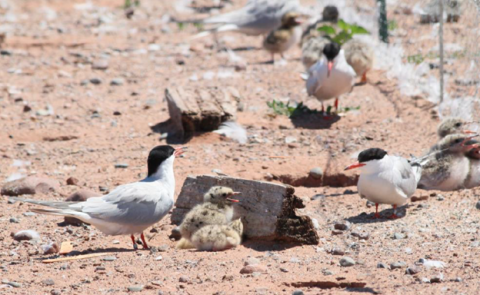Together with the Fond du Lac Band of Lake Superior Chippewa, Minnesota Department of Natural Resources, Minnesota Pollution Control Agency, Wisconsin Department of Natural Resources, and other federal partners, the U.S. EPA has announced the removal of the Degradation of Fish and Wildlife Populations Beneficial Use Impairment (BUI) at the St. Louis River Area of Concern (AOC). This BUI was removed on January 24th, 2023. BUIs are designations created by the International Joint Commission that represent different types of significant environmental degradation (see Beneficial Use Impairments for the Great Lakes AOCs to learn more). The GLRI was a significant source of funding for the habitat restoration and population assessments carried out by partners in support of removing this BUI.
Past industrial activity in the St. Louis River AOC had led to poor water quality, contaminated sediment, decreased habitat suitability, and impaired food sources - negatively impacting native fish and wildlife populations for decades. Some notable species native to the St. Louis River include Walleye, Muskellunge, Lake Sturgeon, Bald Eagle, Common Tern, Piping Plover, beaver, muskrat, otter, and mink. To assist in population recovery and reach target criteria for removing the Degradation of Fish and Wildlife Populations BUI, state and local partners assessed the status of key fish and wildlife populations and constructed two habitat projects to support Piping Plover, Common Terns, and other shorebirds. These habitat projects will also encourage natural reproduction within the AOC and provide stopover sites for migratory birds.
To assess whether target species were still limited by physical habitat, food sources, water quality, or contaminated sediments, state partners performed extensive population assessment surveys. This work included measuring catch-per-unit-effort and reproductive rates of fishes, using camera traps to detect mammal presence, and conducting an estuary-wide bird inventory. Monitoring results have shown that target species have recovered to levels required to meet removal objectives. These results, in conjunction with the completion of habitat restoration projects, have satisfied criteria for the removal of the Degradation of Fish and Wildlife Populations BUI.
In addition to the work needed to remove this BUI, prior and ongoing sediment remediation work is also contributing to recoveries of local fauna through improved water quality and reduced exposure to contaminants. Partners continue to perform sediment remediation and habitat restoration work in the AOC and expect fish and wildlife populations to continue improving as work progresses. Additionally, as projects are complete, long-term monitoring and habitat maintenance plans will ensure continued improvement of species of special conservation interest to local, state, tribal, and federal partners, including Piping Plover, Common Tern, and Lake Sturgeon.



